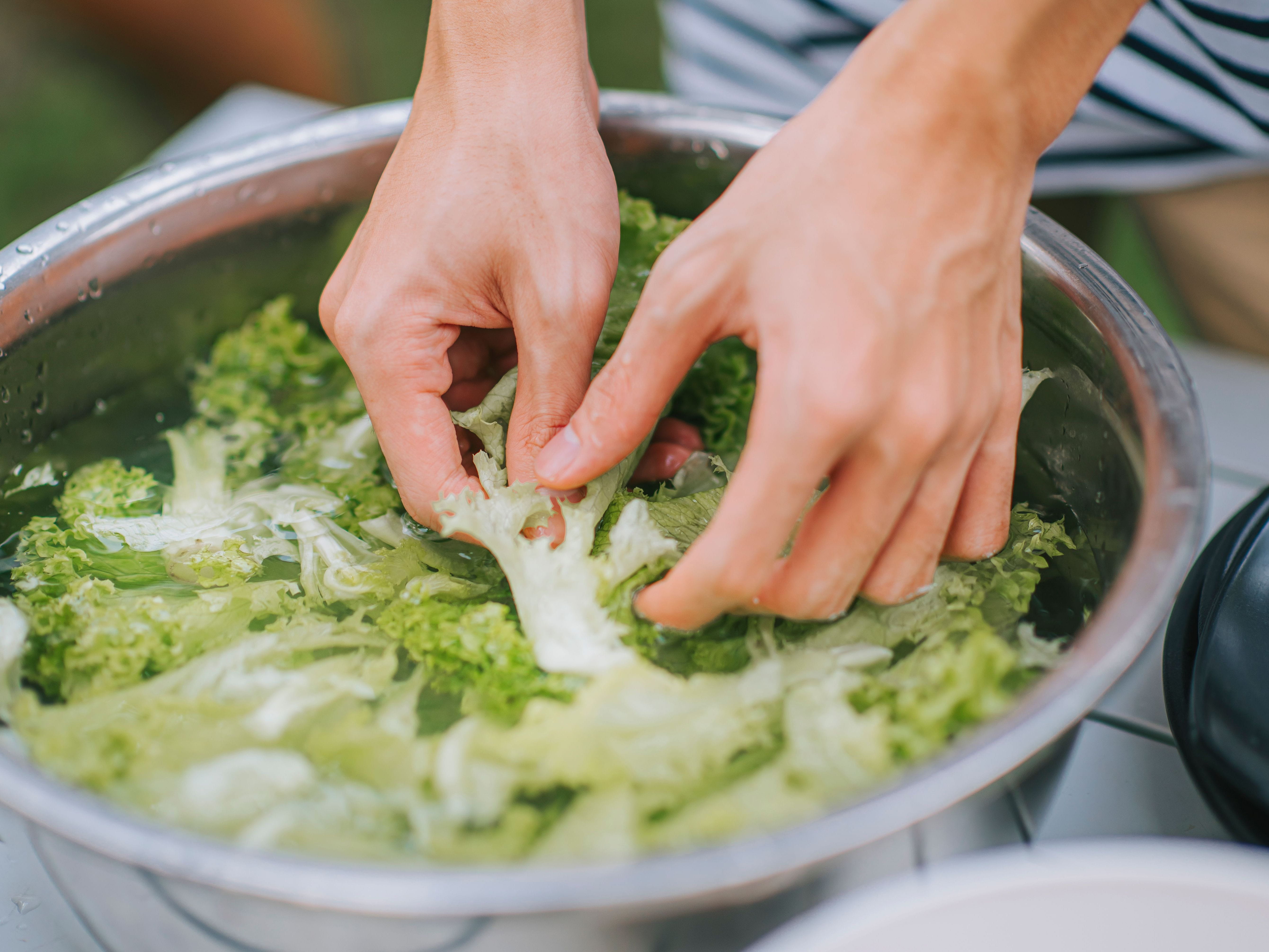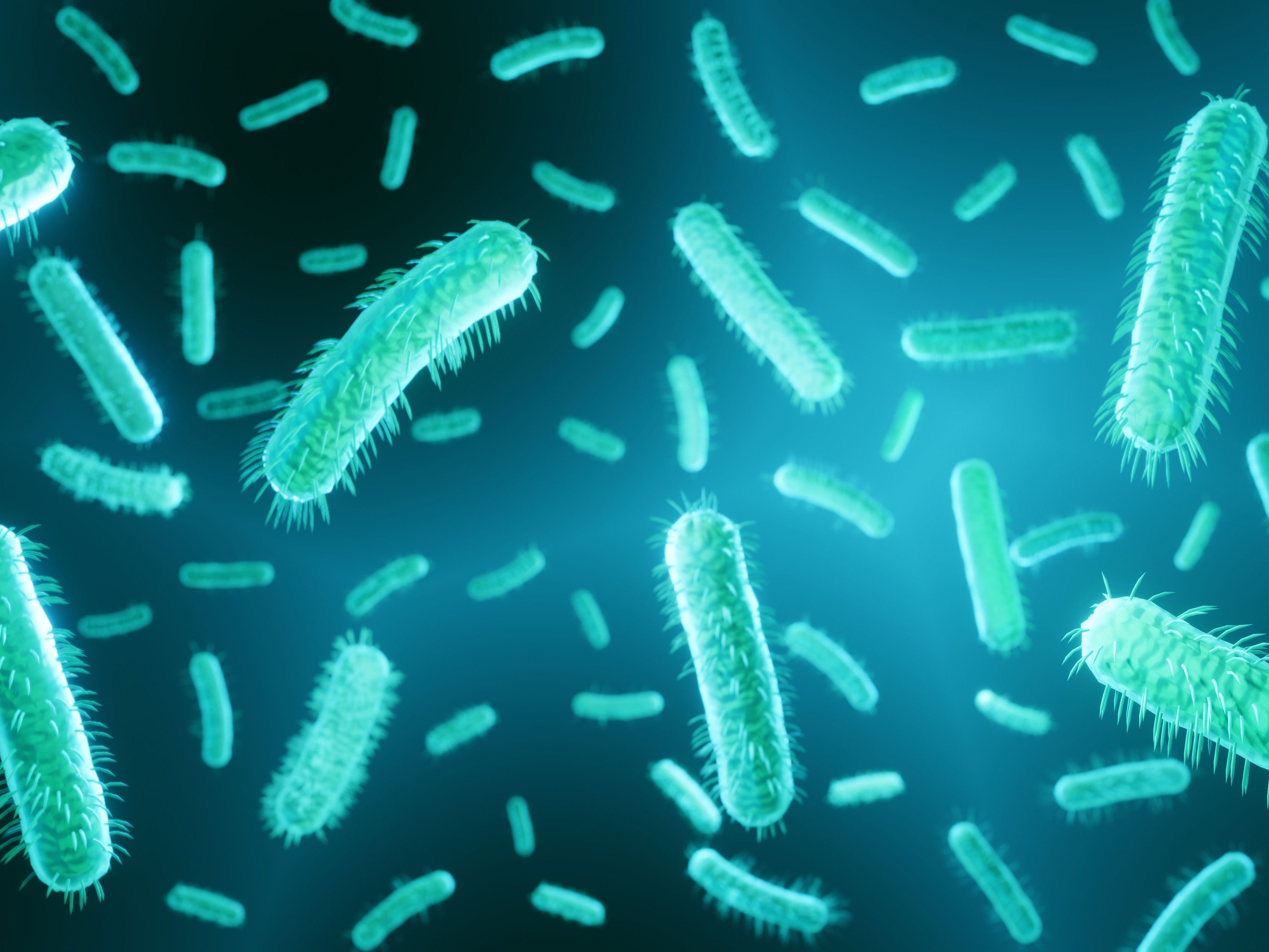E. coli Food Poisoning

The Bottom Line
E. coli is a normal gut bacterium, but there are several types that cause food poisoning. Sources include contaminated water, raw or undercooked ground meat, unpasteurized milk, raw vegetables, fecal-oral transmission, and food handlers. Most types of E. coli cause diarrhea (watery or bloody). Vomiting, abdominal cramps, fever, and kidney failure are also possible symptoms. The best treatment is hydration.

What is E. coli?
E. coli is short for Escherichia coli. It is a gram-negative bacterium that is normally found in human and animal intestines. While most types of E. coli do not cause illness, 6 types do cause gastrointestinal toxicity. The most common of these types are Enterotoxigenic E. coli (ETEC), Enteroinvasive E. coli (EIEC), and Enterohemorrhagic E. coli (EHEC). EHEC is also known as Shiga toxin-producing E. coli (STEC) or E. coli O157:H7.
What are the symptoms of an E. coli infection? What are the first signs?
All 6 of these kinds of E. coli cause diarrhea. While most cause watery diarrhea, some do cause bloody diarrhea. Some types cause other symptoms including vomiting, stomach cramps, and fever. ETEC’s onset is within 6 hours. The onset for EIEC is 24-72 hours, while EHEC begins at 1-8 days. EHEC can cause hemolytic uremic syndrome (see below).
How do you get E. coli? What foods can transmit it?
E. coli is found in contaminated foods such as raw or undercooked ground meat products and raw (unpasteurized) milk. It can also be found in contaminated raw vegetables, sprouts, and contaminated water. It is in the stools of some people and animals. Food handlers can also be a source of infection.
Is E. coli contagious?
Yes, E. coli can be spread by fecal-oral transmission from person to person or from animal to person.
How serious is an E. coli infection in the bladder?
E. coli gastroenteritis can lead to kidney failure. The illness is called Hemolytic Uremic Syndrome (HUS) and is characterized by low red blood cells and platelets, as well as kidney failure. It is very serious and is a medical emergency. It is caused by a toxin produced by EHEC in the intestinal tract. This toxin is like the toxin produced by Shigella, so it is called a Shiga-like toxin. The illness usually starts with diarrhea, which becomes bloody. Other common symptoms include abdominal pain, vomiting, tiredness or irritability, fever, and a pale appearance. Since the kidneys are affected, the person may have blood in their urine, may urinate less, or may not urinate at all.
How to treat an E. coli infection
The best treatment for E. coli is to prevent dehydration by drinking fluids. Most people will recover without further treatment. Using anti-diarrhea drugs may help control the diarrhea, but can also prolong the illness. If you have a high fever, bloody diarrhea, or are suspected of having EHEC, antidiarrheals should not be used. Although most people do not need antibiotics, they are sometimes used in young children, older adults, and people with underlying medical conditions that affect the immune systems. Antibiotics should not be used in people with suspected STEC since they will have no effect on the toxin and may increase the risk of HUS.
What to do if you suspect an E. coli infection
If you suspect you are experiencing E. coli food poisoning, stay hydrated. Drink clear fluids including water, clear sodas, and broth. Do not eat dairy products, fatty foods or spicy foods. You should feel better with a few days to a week. If diarrhea and/or abdominal pain is severe or you have a decrease in your urine output, contact a health care professional.
Help from experts is available through the webPOISONCONTROL online tool and by phone at 1-800-222-1222. Poison Control’s expert guidance is always free, confidential, and available 24 hours a day.
Wendy Klein-Schwartz, Pharm.D., MPH
Clinical Toxicologist
Poison Control Media Information
Did you find this page helpful? If so, we need your support. Poison Control is in constant competition with misinformation online. Links to www.poison.org or our webPOISONCONTROL triage tool from other websites and blogs help internet searchers quickly find accurate information and Poison Control’s contact information in an emergency. If you use the content from this page, please provide attribution via a link back to this page, www.poison.org, or https://triage.webpoisoncontrol.org/#!/exclusions. By doing so, you could save a life. Thank you!
Poisoned?
Call 1-800-222-1222 or
Prevention Tips
- Wash your hands with soap and water before, during, and after preparing food.
- Wash your hands after using the toilet, changing a diaper, or cleaning an animal’s litter box.
- Wash your hands if you are helping someone experiencing diarrhea or vomiting.
- Wash countertops after preparing a food item.
- Wash utensils and cutting boards.
- Rinse fruits and vegetable with water.
- Keep raw poultry, meat, and seafood separate from other foods.
- Make sure you cook food at a high enough temperature. Always check the recommended safe internal temperature before eating a food.
- Refrigerate food within 2 hours.
- Use only pasteurized milk, dairy products, and juices.
- If traveling or camping, be sure to drink safe water.
- Don’t swallow water in swimming pools, lakes, or streams.
This Really Happened
A 37-year-old woman experienced bloody diarrhea, abdominal pain, fever, and headache after eating a hamburger. She was admitted to the hospital. Bloody diarrhea and abdominal pain persisted for 1 week and she was diagnosed with hemorrhagic colitis. On day 5, her urine output decreased and there was blood in her urine; hemoglobin and platelet levels has also decreased. She recovered with intravenous fluids and supportive care. The causative agent was determined to be EHEC.For More Information
Kinds of E. coli. Centers for Disease Control and Prevention.
References
Bansa R, Zhamutashvili M, Gognadze T, Jojua N, Dolmazishvili E. Enterohemorrhagic Escherichia coli leading to heamolytic uremic syndrome-Case study and review. Georgian Med News. 2024;348:78-80.
Lopez-Velez R, Lebens M, Bundy L, Barriga J, Steffen R. Bacterial travellers’ diarrhoea: A narrative review of the literature published over the past 10 years. Travel Med Inect Dis. 2022;47:102293. doi: 10.1016/j.tmaid.2022.102293.
Oakes RS, Kirkham JK, Nelson RD, Siegler RL. Duration of oliguria and anuria as predictors of chronic renal-related sequalae in post-diarrheal hemolytic uremic syndrome. Pediatr Nephrol. 2008;23(8):1303-1308. doi: 10.1007/s00467-008-0799-9.
Smith KE, Wilker PR, Reiter PL, Hedican EB, Bender JB, Hedberg CW. Antibiotic treatment of Escherichia coli O157 infection and the risk of hemolytic uremic syndrome, Minnesota. Pediatr Infect Dis J. 2012;31(1):37-41. doi: 10.1097/INF.0b013e31823096a8.
Poisoned?
Call 1-800-222-1222 or
Prevention Tips
- Wash your hands with soap and water before, during, and after preparing food.
- Wash your hands after using the toilet, changing a diaper, or cleaning an animal’s litter box.
- Wash your hands if you are helping someone experiencing diarrhea or vomiting.
- Wash countertops after preparing a food item.
- Wash utensils and cutting boards.
- Rinse fruits and vegetable with water.
- Keep raw poultry, meat, and seafood separate from other foods.
- Make sure you cook food at a high enough temperature. Always check the recommended safe internal temperature before eating a food.
- Refrigerate food within 2 hours.
- Use only pasteurized milk, dairy products, and juices.
- If traveling or camping, be sure to drink safe water.
- Don’t swallow water in swimming pools, lakes, or streams.
